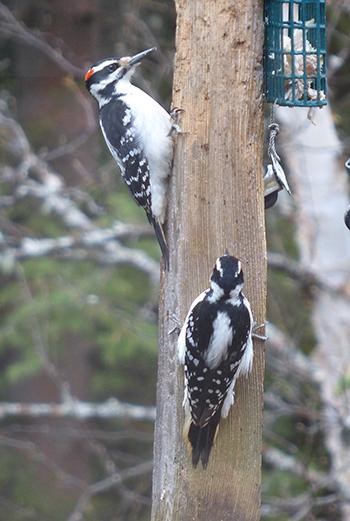Discover the Fascinating Globe of Woodpeckers: Whatever You Need to Know
The globe of woodpeckers is a realm loaded with distinct behaviors, elaborate adjustments, and a diverse variety of types. From their habitats and circulation patterns to their feeding habits and specialized physiological attributes, woodpeckers have long astounded the passion of ornithologists and nature enthusiasts alike.
Woodpecker Habitats and Distribution
In North America, for example, woodpeckers can be spotted in both coniferous and deciduous woodlands, utilizing their solid beaks to forage for pests and develop nesting tooth cavities in trees. In Africa, specific woodpecker species have adjusted to dry settings, such as the acacia timberlands, where they play a critical role in regulating insect populations.

Feeding Behaviors and Diet Regimen
Woodpeckers utilize their strong beaks to pierce right into the bark of trees, probing for bugs and larvae hidden underneath the surface area. In addition to pests, woodpeckers likewise consume nuts, seeds, fruits, and sap.
Woodpeckers are known for their drumming actions, which serves not just to connect with various other woodpeckers however additionally to find food. The rapid drumming sound is created by the bird pecking on resonant surfaces like dead trees or steel posts. This actions can draw in pests hidden in the timber, permitting the woodpecker to spot their presence and prey on them.
One-of-a-kind Adaptations for Tree Climbing
In their experienced quest of insects concealed within tree bark, woodpeckers have evolved remarkable anatomical functions that outfit them with special adaptations for effective tree climbing. Woodpeckers have solid neck muscular tissues and a special skull structure that take in the impact of continuous pecking, enabling them to climb up and down without creating injury to their brains. These adaptations display the incredible evolutionary design that allows woodpeckers to navigate trees with accuracy and effectiveness.
Diverse Woodpecker Types Worldwide
With over 200 various types spread throughout different environments worldwide, the household of Picidae encompasses view it an exceptional diversity of woodpeckers. These birds can be located in woodlands, forests, savannas, and also urban areas, showcasing their versatility to various settings. From the famous Northern Flicker in North America to the vibrant and you could try here elusive Crimson-backed Flameback in Asia, each woodpecker varieties shows unique characteristics in terms of plumage, behavior, and habitat choice.
Woodpeckers vary substantially in dimension, with the small Downy Woodpecker gauging around 6-7 inches in size, while the effective Lineated Woodpecker can get to up to 17 inches - Woodpeckers in Florida. Their beaks additionally can be found in various sizes and shapes, showing their feeding habits. Some varieties concentrate on removing pests from tree bark, like the Acorn Woodpecker, while others, such as the Black-cheeked Woodpecker, feed on fruits and seeds

Preservation Efforts and Difficulties
Conservation campaigns for woodpecker populations are crucial in minimizing the influence of environment loss and other hazards dealing with these varied bird species. Woodpeckers deal with numerous challenges to their survival, mostly as a result of logging, urbanization, environment modification, and intrusive varieties. To deal with these concerns, preservation initiatives concentrate on securing and restoring woodpecker habitats, carrying out lasting forestry methods, and elevating recognition regarding the importance of these birds in ecosystems.
One considerable obstacle in woodpecker Learn More conservation is the fragmentation of their environments, leading to separated populaces that are a lot more prone to extinction - Woodpeckers in Florida. Preservationists work to create wildlife hallways and secured areas that attach these fragmented environments, permitting woodpeckers to relocate between different locations for feeding, breeding, and sanctuary

Conclusion
In conclusion, woodpeckers are remarkable birds with one-of-a-kind adaptations for tree climbing and feeding habits. More research study and preservation activities are required to ensure the survival of woodpeckers in the wild.